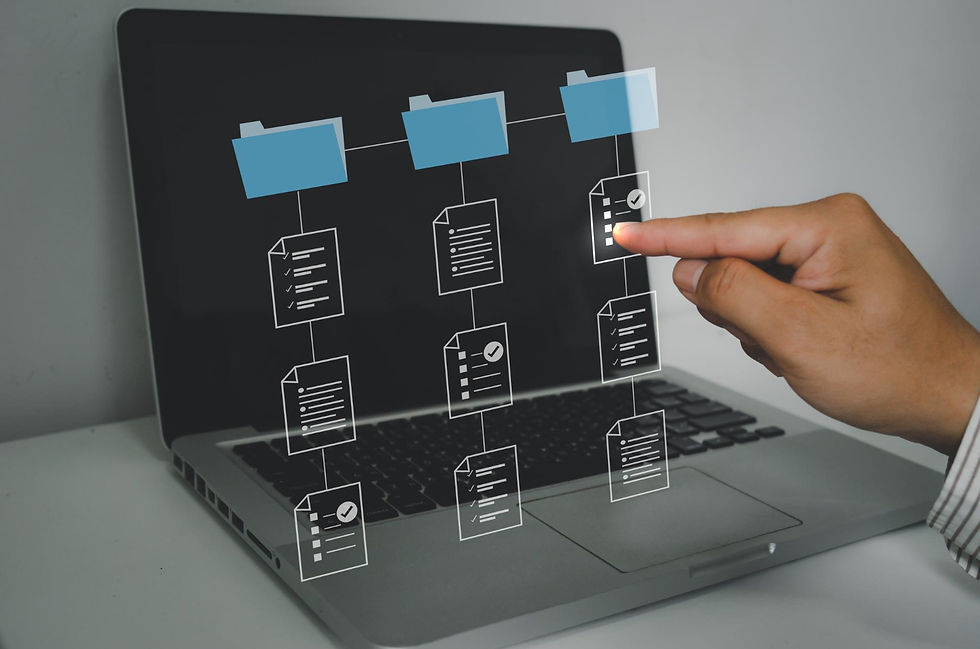From Chaos to Clarity: How the Workflow Model Organizes Your Life
- johnzrock
- Aug 4, 2023
- 2 min read
In the midst of busy schedules, multiple responsibilities, and endless tasks, life can often feel chaotic and overwhelming. The workflow model offers a powerful solution to bring order and clarity to our lives. By applying the principles of the workflow model to personal life, we can streamline tasks, set clear objectives, and prioritize activities for optimal productivity. In this in-depth blog, we will explore how the workflow model can transform chaos into clarity, empowering individuals to lead more organized and fulfilling lives.

Understanding the Workflow Model:
The workflow model is a systematic approach to task management, widely used in businesses and projects. By applying its principles to personal life, we can create a structured framework for managing daily tasks, projects, and goals.
Defining Personal Objectives:
The first step towards organizing your life is to define clear and achievable personal objectives. Identify long-term goals and break them down into smaller, actionable tasks for better focus and direction.
Prioritizing Tasks with Time Management:
Use time management techniques, such as the Eisenhower Matrix or Pomodoro Technique, to prioritize tasks based on urgency and importance. This ensures you focus on tasks that align with your goals and values.
Creating To-Do Lists:
Craft daily, weekly, or monthly to-do lists to outline tasks and activities. A well-structured list helps you stay on track, avoid forgetting important tasks, and maintain a sense of accomplishment as you check off completed items.
Designing Workflow Maps:
Visualize your personal workflow through flowcharts or mind maps. Organize activities, dependencies, and milestones to gain a comprehensive overview of your personal projects and tasks.
Streamlining with Automation:
Leverage technology to automate repetitive tasks and save time. Use calendar and reminder apps to manage appointments, set recurring tasks, and maintain regular routines.
Setting Boundaries and Time Blocking:
Maintain a healthy work-life balance by setting clear boundaries and practicing time blocking. Allocate specific time slots for work, leisure, and personal activities to avoid burnout and increase productivity.
Embracing Continuous Improvement:
Apply the concept of continuous improvement to your personal life. Regularly review your progress, adjust your workflow as needed, and celebrate achievements to foster motivation and growth.
Cultivating Mindfulness and Wellness:
Incorporate mindfulness practices and self-care routines into your workflow. Meditation, exercise, and regular breaks promote mental well-being and enhance overall clarity and focus.
Utilizing Personal Development:
Invest in personal development through reading, courses, or coaching. Strengthen your skills and knowledge to increase your efficiency, confidence, and adaptability.
Conclusion:
The workflow model is a powerful tool for bringing order and clarity to the chaos of daily life. By defining personal objectives, prioritizing tasks, and creating to-do lists, you can stay focused and productive. Visualizing your workflow and streamlining with automation allows you to manage your time efficiently. Setting boundaries, embracing continuous improvement, and practicing mindfulness fosters a healthy and balanced lifestyle. Investing in personal development enhances your skills and capabilities, empowering you to navigate life's challenges with confidence. With these in-depth facts and practical tips, you are now equipped to apply the workflow model to organize your life and transform chaos into clarity. So, embrace the power of the workflow model and witness the positive impact it brings to your personal journey. Happy organizing and living a life of clarity!
SITES WE SUPPORT
SOCIAL LINKS



Comments